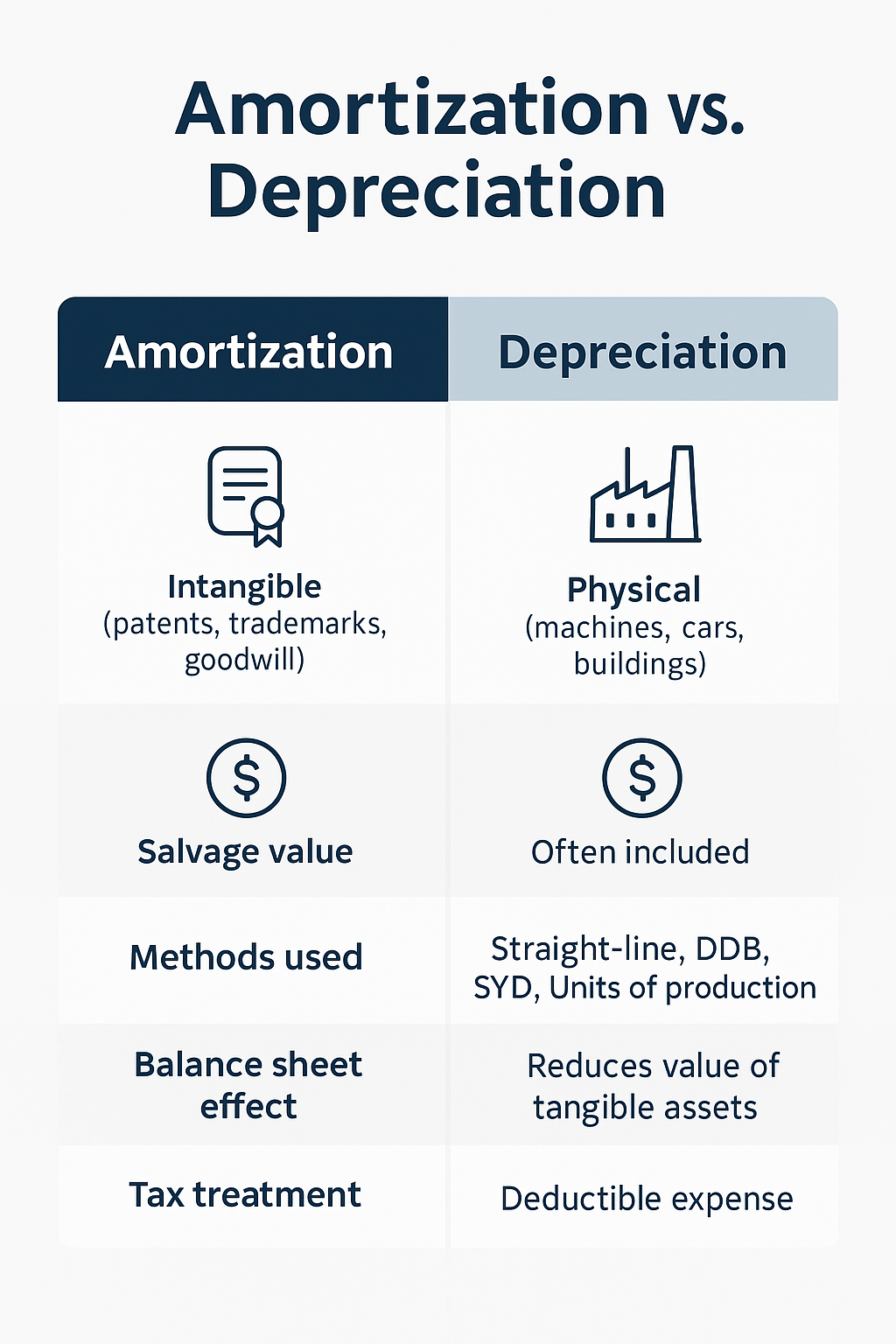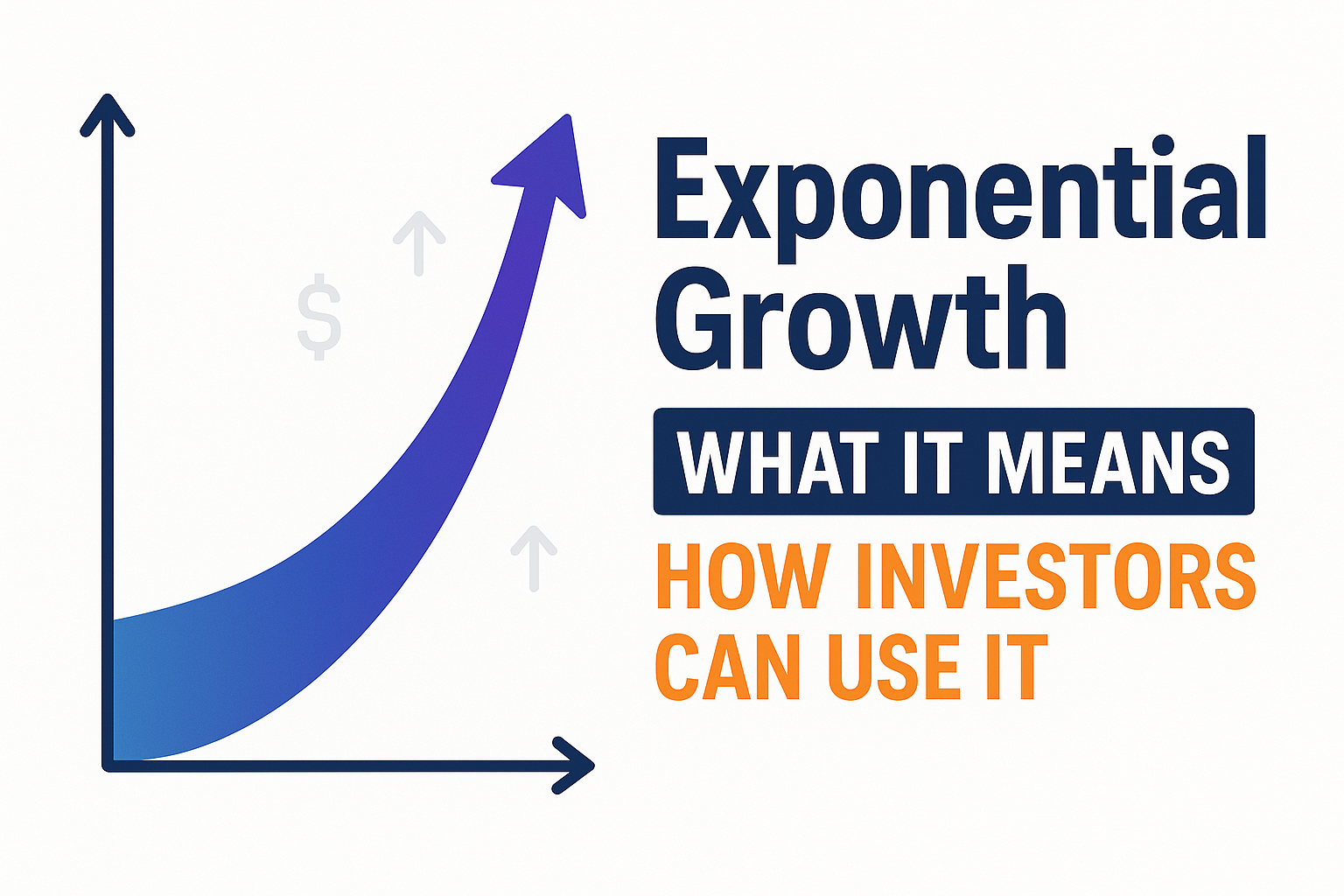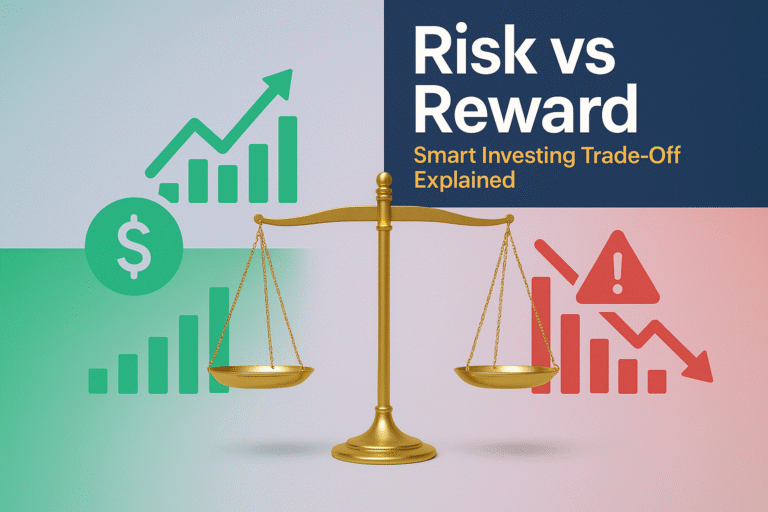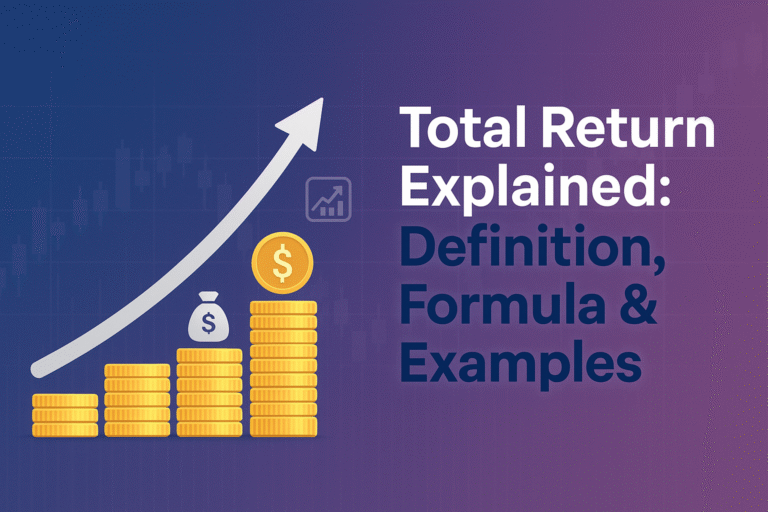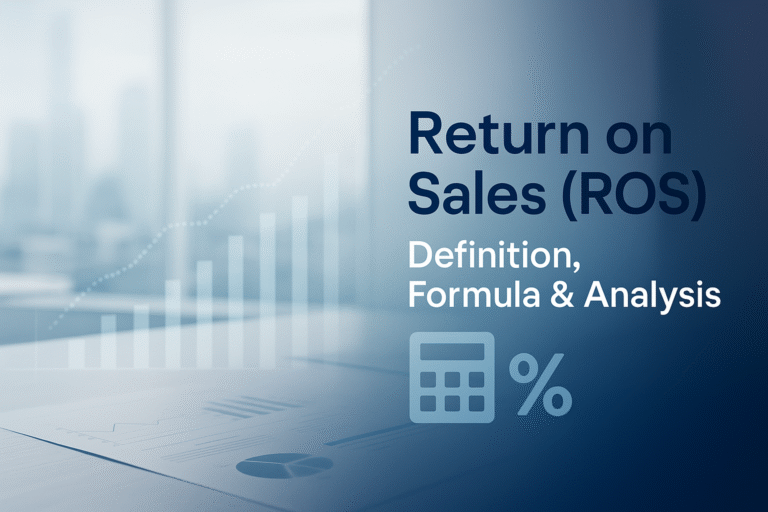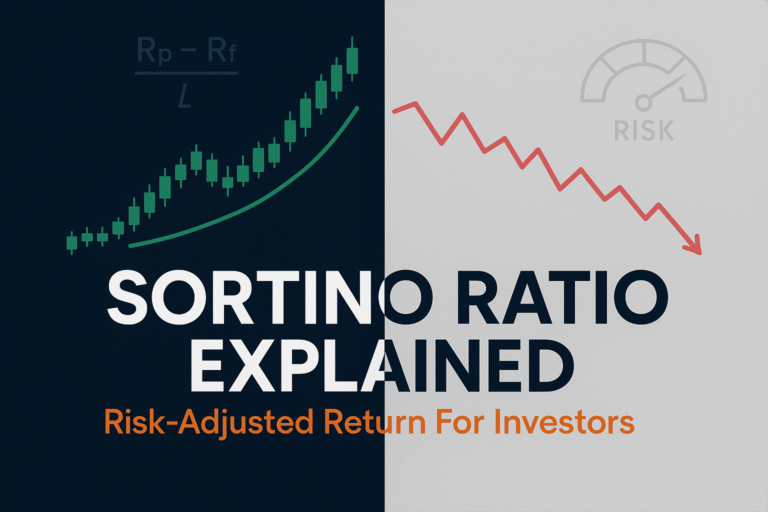Amortization and depreciation are two accounting methods businesses use to spread out the cost of assets over time. While they serve a similar purpose, matching expenses to revenue, they apply to different types of assets. Depreciation relates to tangible assets like equipment, while amortization applies to intangible assets like patents. Understanding the difference is crucial for accurate financial reporting and smart decision-making.
What Is Depreciation?
Depreciation is the gradual allocation of the cost of a physical asset over its useful life. Examples include machinery, vehicles, and buildings.
Formula (Straight-Line Depreciation):
Depreciation Expense = (Cost – Salvage Value) / Useful LifeExample:
- Machine cost = $50,000
- Salvage value = $5,000
- Useful life = 5 years
Depreciation Expense = (50,000 – 5,000) / 5
Depreciation Expense = 9,000 per yearWhat Is Amortization?
Amortization spreads the cost of an intangible asset (like software licenses, copyrights, or trademarks) across its useful life. Unlike depreciation, amortization usually assumes no salvage value.
Formula (Straight-Line Amortization):
Amortization Expense = Intangible Asset Cost / Useful LifeExample:
- Patent cost = $20,000
- Useful life = 10 years
Amortization Expense = 20,000 / 10
Amortization Expense = 2,000 per yearAmortization vs Depreciation: Key Differences
| Feature | Depreciation (Tangible) | Amortization (Intangible) |
|---|---|---|
| Asset type | Physical (machines, cars, buildings) | Intangible (patents, trademarks, goodwill) |
| Salvage value | Often included | Usually excluded |
| Methods used | Straight-line, DDB, SYD, Units of production | Primarily straight-line |
| Balance sheet effect | Reduces the value of intangible assets | Reduces value of intangible assets |
| Tax treatment | Deductible expense | Deductible expense |
Advantages
Depreciation
Matches expenses with revenue
Multiple calculation methods available
Amortization
Simplifies expense allocation for intangibles
Straightforward calculation
Disadvantages
Depreciation
Can be complex with accelerated methods
Assumptions about useful life may be inaccurate
Amortization
Limited flexibility (usually straight-line only)
Intangible values can be harder to estimater to estimate
Investor & Business Use Cases
- Businesses: Depreciation impacts operating costs, while amortization is key for companies with valuable IP or goodwill.
- Investors: Understanding both helps in analyzing profitability, especially for asset-heavy industries (manufacturing vs. tech).
- Tax planning: Both provide deductions, reducing taxable income.
FAQS
No. In accounting, amortization applies to intangibles. Loan amortization refers to scheduled payments.
Intangibles usually have no resale value at the end of their life.
Yes, many businesses have both tangible and intangible assets.
Depends on the asset type and size. Both reduce taxable income.
Other Link Suggestions:
Sources:
- U.S. Securities and Exchange Commission (SEC) – Accounting Basics
- Financial Accounting Standards Board (FASB)
- IRS – Depreciation Guidance
The Bottom Line: Amortization vs Depreciation
Amortization and depreciation both spread out asset costs, but they apply to different asset types: intangibles vs. tangibles. For businesses, understanding both ensures accurate financial reporting and smarter tax planning. For investors, knowing the difference helps in evaluating company performance.
Whether you’re a business owner or investor, mastering these accounting concepts helps you see the true cost of assets over time.

